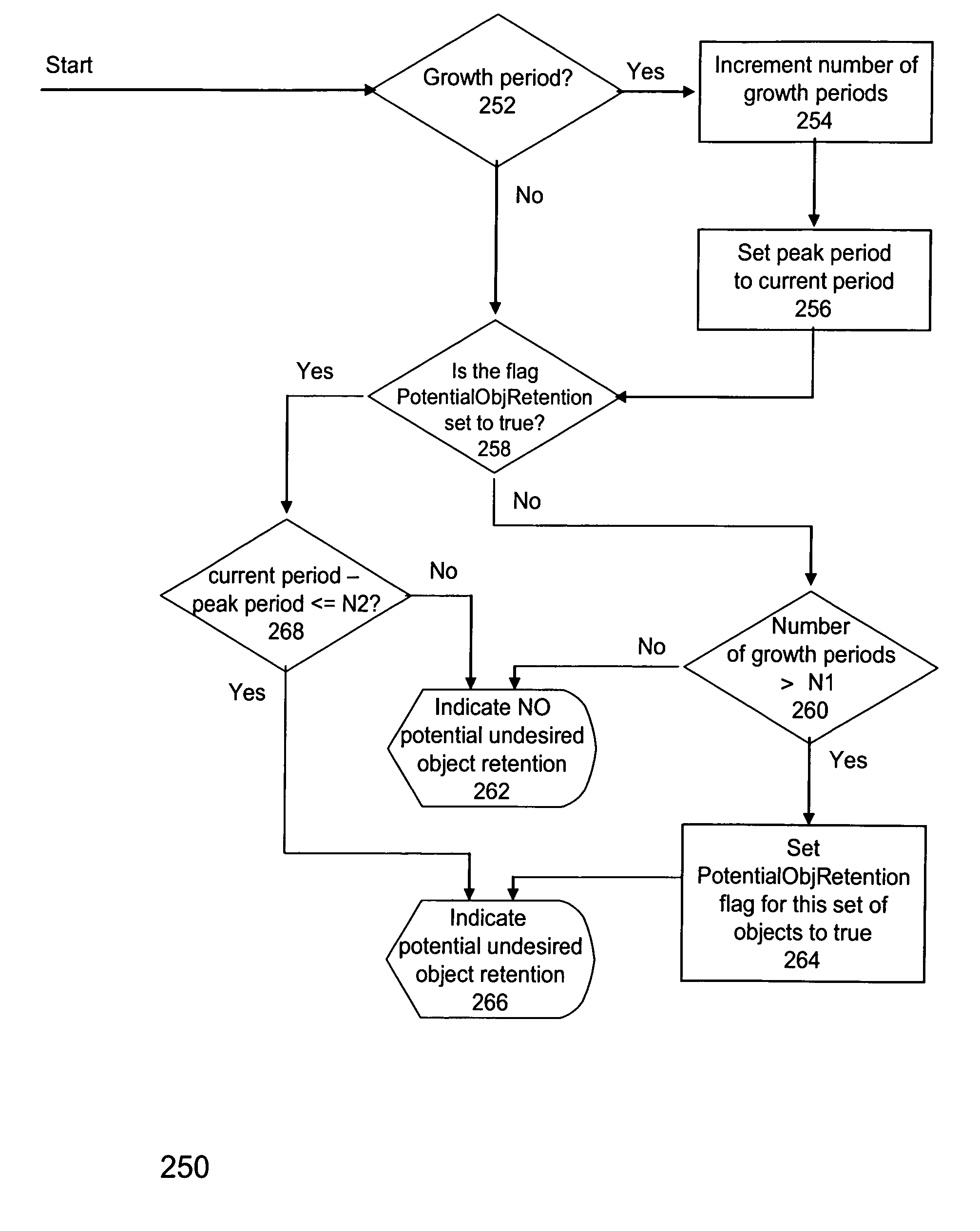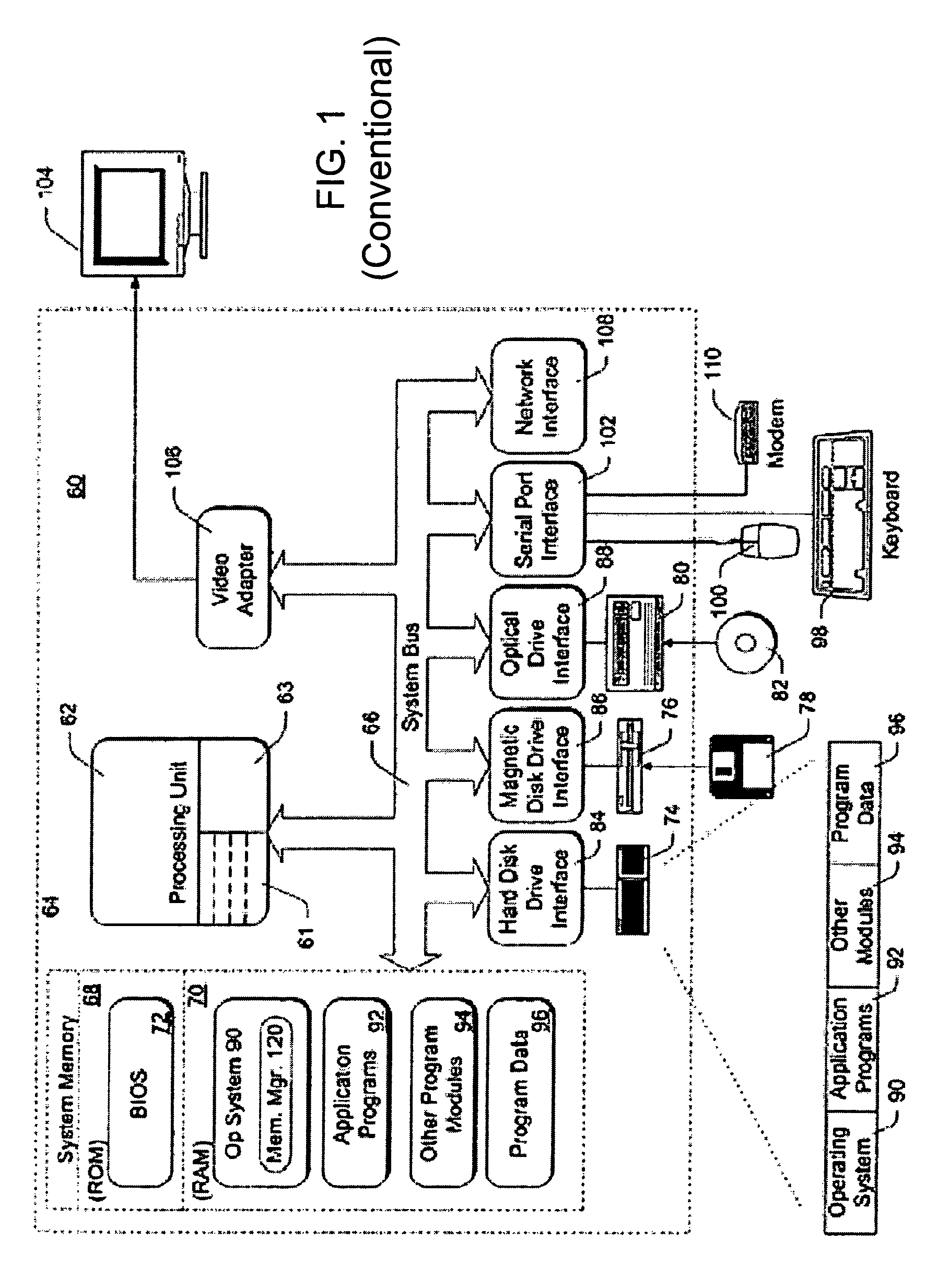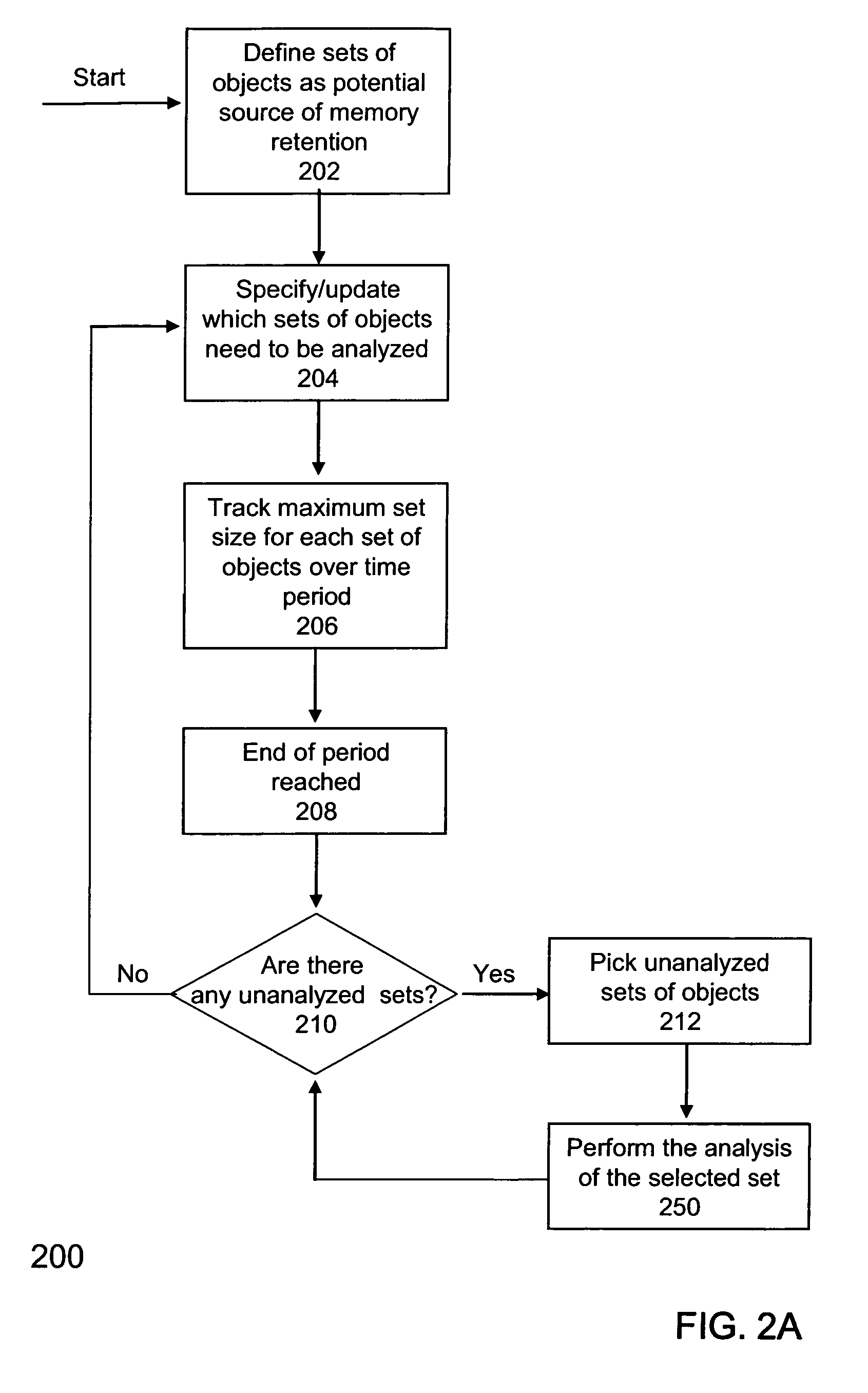Identifying sources of memory retention
a memory and source technology, applied in the field of computer systems, can solve the problems of memory waste, undesired retention of limited resources, and memory waste, and achieve the effect of low overhead
- Summary
- Abstract
- Description
- Claims
- Application Information
AI Technical Summary
Benefits of technology
Problems solved by technology
Method used
Image
Examples
example implementation
[0055
[0056]An example implementation of the methods 200 and 250 in FIGS. 2A and 2B is now described in accordance with an embodiment of the invention. In this example, the sets of objects to be tracked for memory leak purposes are determined by the objects belonging to standard Java collection classes. For each such object, the set of objects to be analyzed by method 200 is defined as the objects referenced (or “contained”) by the collection object. Therefore, the set of objects to be analyzed may be considered identical with the objects belonging to the Java collection classes. For each collection class, a “wrapper” class may be used which is a subclass of the original class. When the application classes are loaded for execution, or dynamically as the application is executing, each creation of the collection object in the Java bytecodes is replaced with the creation of the corresponding wrapper (or suitably modified) collection object.
[0057]For example, if the original application ...
PUM
 Login to View More
Login to View More Abstract
Description
Claims
Application Information
 Login to View More
Login to View More - R&D
- Intellectual Property
- Life Sciences
- Materials
- Tech Scout
- Unparalleled Data Quality
- Higher Quality Content
- 60% Fewer Hallucinations
Browse by: Latest US Patents, China's latest patents, Technical Efficacy Thesaurus, Application Domain, Technology Topic, Popular Technical Reports.
© 2025 PatSnap. All rights reserved.Legal|Privacy policy|Modern Slavery Act Transparency Statement|Sitemap|About US| Contact US: help@patsnap.com



